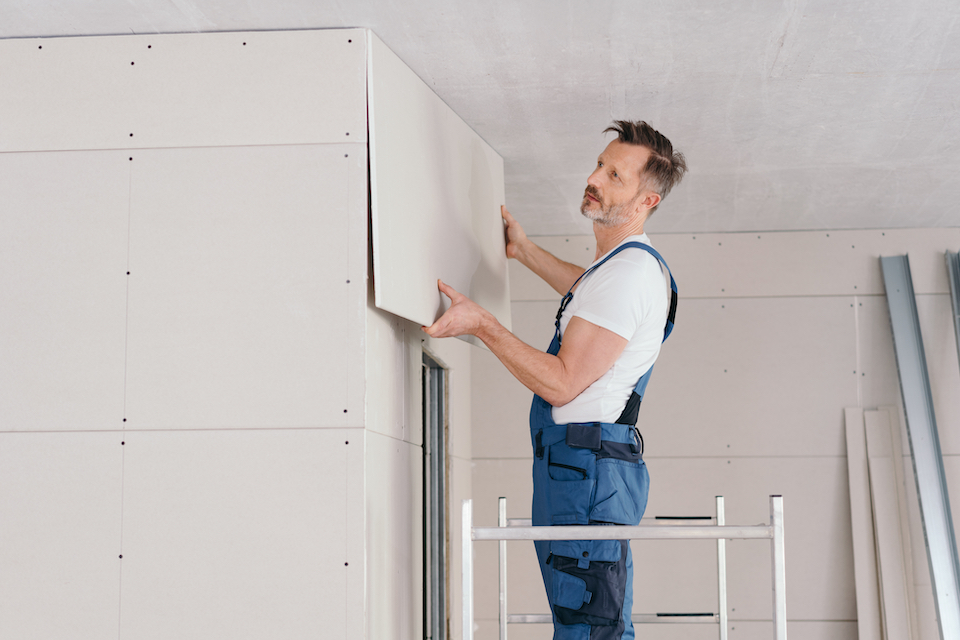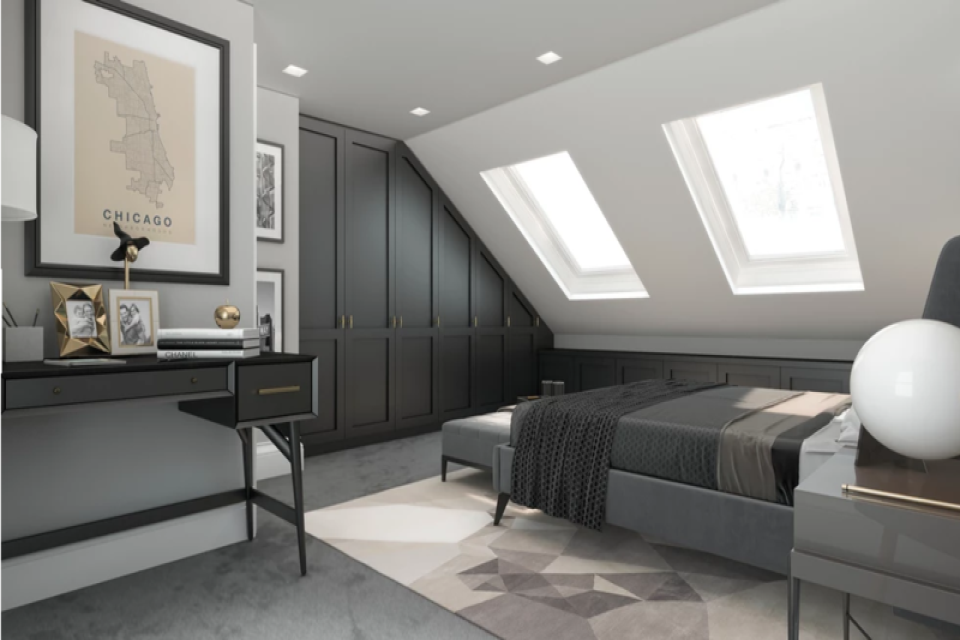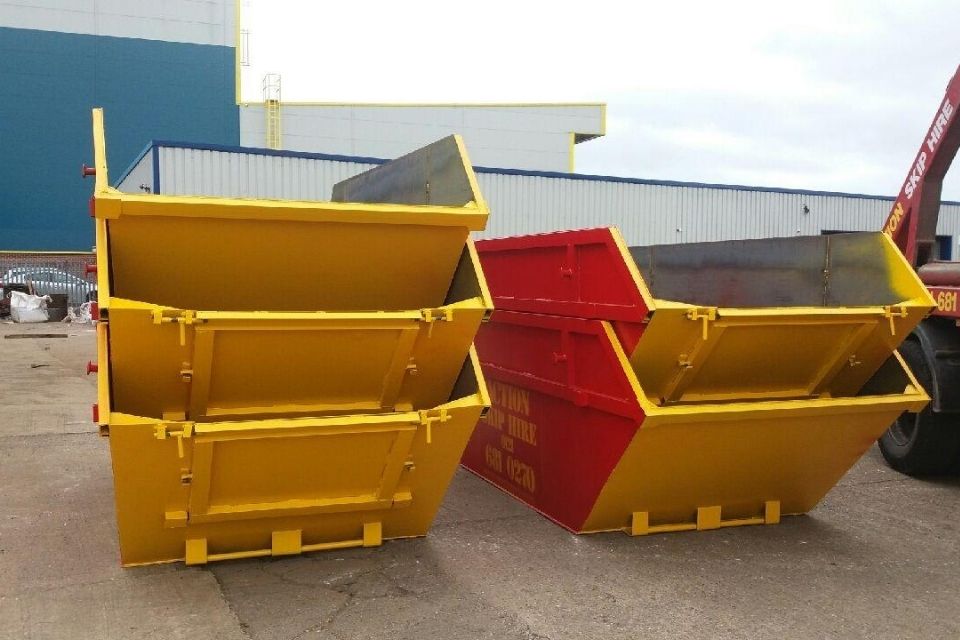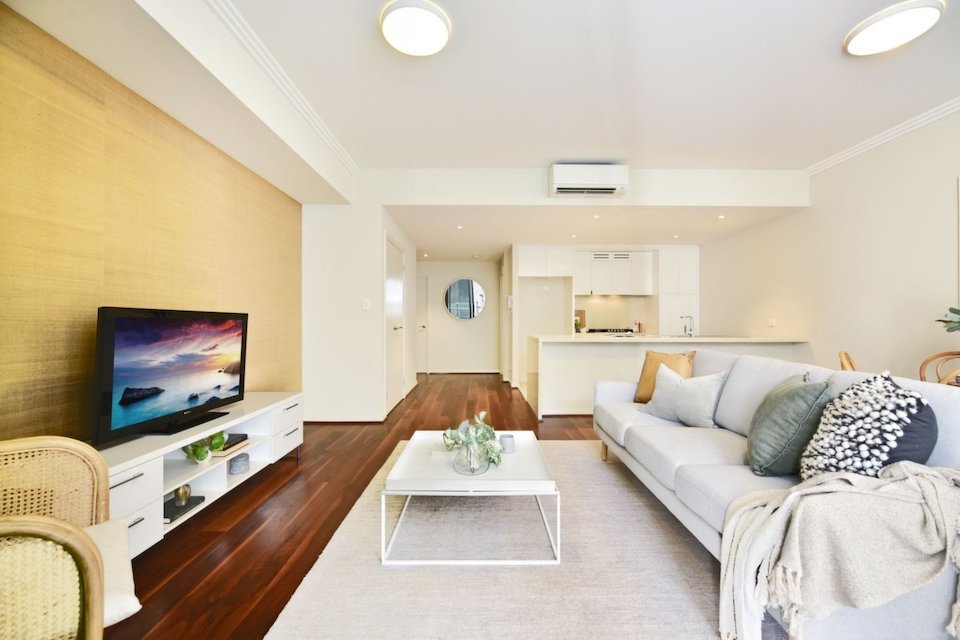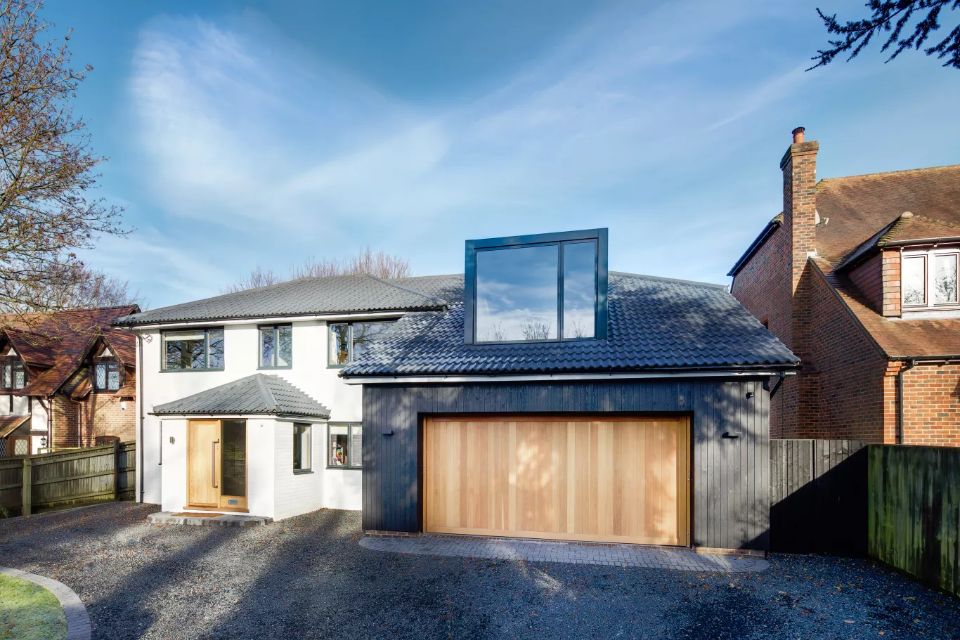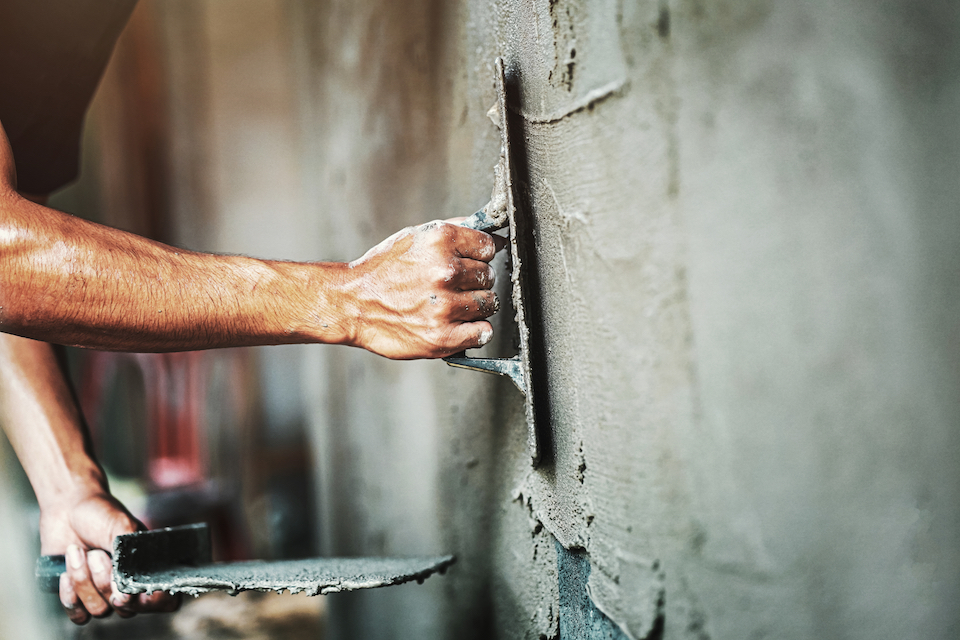How Much Does uPVC Cladding Cost?
Are you considering installing uPVC cladding on your home? If so, you may be wondering about how much it costs to install uPVC cladding.
We will also go over the timescales you can expect when installing uPVC cladding, the different types of uPVC cladding, and how much it costs to remove uPVC cladding.
So if you're considering this type of work for your home, read on to find out everything you need to know.
The cost of uPVC cladding installations will depend on several factors, including the size of the area, the type and finish of the cladding, and whether you need scaffolding to install it.
Your location will also affect the overall cost as those based in the London area will pay more for the work than those based in the North or other parts of the UK.
The two main types of cladding are V-joint and shiplap.
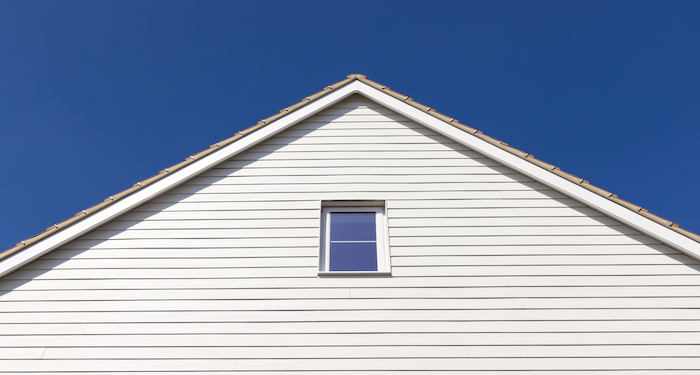
Shiplap will usually come in 150mm boards at five-metre lengths. These cost around £25-£35 per square metre. Coloured versions are a little more expensive at around £40-£45 per square metre.
V-joint cladding boards are 100mm wide and also come in five-metre lengths. These cost an average of £30-£40 per square metre, and the coloured versions cost around £50-£60 per square metre.
The size of the area will determine how much cladding you need. Some people like to install cladding as an aesthetic feature on just the gable or the top half of the front elevation.
Others prefer to have the whole property covered in the cladding. As houses vary in size, the amount of cladding needed will vary from project to project.
As we've already mentioned, the total price of installing uPVC cladding will vary. However, the tables below should give you an idea of the uPVC cladding prices to expect for your project.
All of the prices below include the cost of removing old cladding, disposing of the waste, and all of the labour and material costs.
uPVC Cladding Prices
The prices below are based on the costs required for each different type of cladding to be fixed to the gable end of an average-sized two-story home.
| TYPE OF UPVC CLADDING | AVERAGE COST |
|---|---|
| White uPVC Shiplap Cladding Cost | £1250-£1750 |
| White Open V Cladding Cost | £1200-£1500 |
| Rosewood Shiplap Cladding Cost | £4275-£5800 |
| Rosewood Open V Cladding Cost | £4200-£5000 |
Cladding Prices for Various Locations
The prices below are based on the use of white shiplap cladding on various parts of a home.
| AREA OF THE PROPERTY | AVERAGE COST |
|---|---|
| Gable end of a two-storey property | £1250-£1750 |
| 3 sides of a semi-detached property | £3125-4375 |
| 4 sides of a detached property | £4000-£5600 |
| Gable end of a bungalow | £750-£1050 |
| 3 sides of a bungalow | £1875-£2625 |
| 4 sides of a bungalow | £2400-£3360 |
What are the Supply Costs for uPVC Cladding?
Most people will choose to hire a professional company to complete a uPVC cladding installation as it's a very large project and a difficult job, and it usually requires more than one person to complete.
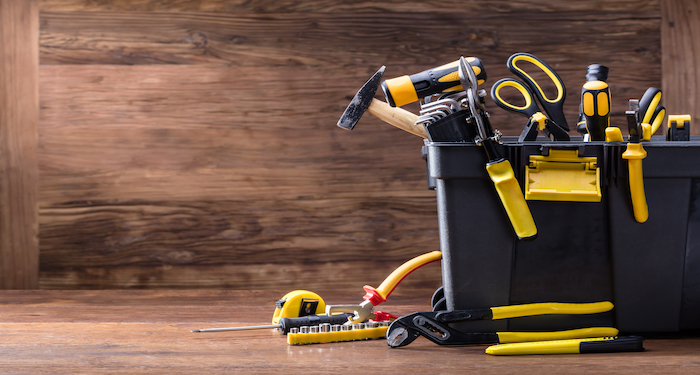
However, if you do decide to install the cladding yourself, you may be curious about the costs of the supplies alone without the labour costs included.
The table below gives an idea of the average uPVC cladding cost per five-metre length for white and various other cladding colours. 150mm of uPVC shiplap cladding covers 0.75 square metres, and 100mm of uPVC V-joint cladding covers 0.5 square metres.
| COLOUR | SHIPLAP 150mm | V-JOINT 100mm |
|---|---|---|
| White | £20-£25 | £15-£20 |
| Anthracite | £30-£35 | £25-£30 |
| Golden oak | £30-£35 | £25-£30 |
| Black Ash | £30-£35 | £25-£30 |
| Rosewood | £30-£35 | £25-£30 |
What are the Additional Costs of Installing uPVC Cladding?
When you plan to get external cladding put on your home, there may be a few other costs you might need to consider. One of the major costs for this type of work is the hire of scaffolding.
Due to the high costs of hiring scaffolding, it’s often economical to consider completing some additional jobs at the same time.
Scaffolding Hire
Scaffolding hire prices is one of the biggest things you need to budget for with this type of work. This will often not be included in the price you're quoted.
However, it won't be possible to complete an external uPVC cladding installation on a two-storey building without scaffolding.
The scaffolding hire cost will depend on how much scaffolding you need. This will be dependent on the number of sides of the house that require cladding. The price can range from around £3000-£6000.
This is why it’s a good idea to combine cladding installations with any other jobs that may require scaffolding at the same time.
Painting the Exterior of a House
Painting the exterior of your home is another job that can be completed while you have scaffolding erected.
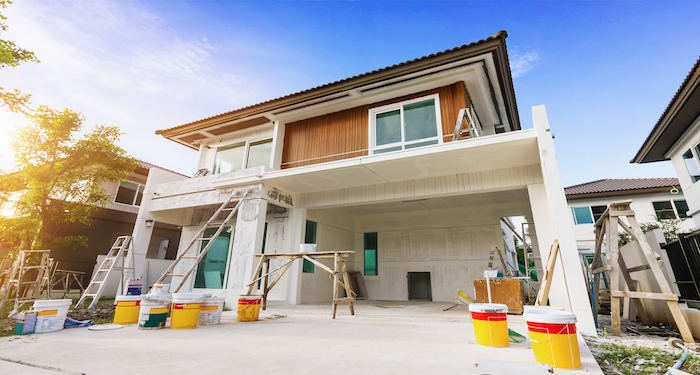
If you have external timber work on your home, it’s a great idea to get it painted to keep it looking perfect. The average cost of getting the outside of your home painted is around £500-£1200.
The overall cost will depend on the amount of paint that is needed and the type of paint you choose.
New Front Door
If you want a new front door, it's best to get it installed before getting your cladding fitted. This is because the cladding will need to be cut around your front door. So, if you decide to get a new front door in the future, this may affect the cladding.
The average cost of your new front door will depend on the type of front door you choose. On average, you can expect to pay around £500-£2500 for a standard front door and around £2000-£4500 for a custom-made front door.
New Windows
If you need new windows in your home, it's best to get these fitted before you have your new cladding installed. This is because the cladding is cut to fit around your windows. IF you choose to replace the windows at a later date, this may affect the cladding.
When installing your new upper windows, you can make use of the scaffolding. This can help you save money in the long run.
The average cost of installing new windows on your entire home is around £3000-£6000.
Tradesmen Costs for uPVC Cladding Installation
If you are planning on sourcing and purchasing the cladding yourself without the help of the contractors, then you’ll want to know the cost of hiring the contractors alone. Here, we will go over the costs you can expect when hiring contractors alone without the cost of the cladding boards.

Tradespeople will usually charge around £150-£200 per day for the cost of labour work. The tradespeople will usually work in pairs for this type of job for safety reasons and efficiency for the work.
The cost of labour will usually be around £250-£300 per day for both tradespeople.
How Long Does It Take to Install uPVC Cladding?
If you are planning on having cladding installed on your home, then you may be wondering about the timescales you can expect with this type of installation.
The length of time that the job takes will depend on the size of your home and how many walls you want to have the cladding installed on. A reasonable estimate for the timescales is around 2-3 days per side of the property.
This is assuming that the tradesperson you hire will work as part of a two-person team. If you are having just the lower storey clad or if you are having cladding installed on a bungalow, then it’s likely to be able to be completed by just one tradesperson.
These timescales include the removal of any old cladding on the walls, replacing the old cladding with some new uPVC boards, and disposing of any waste that is created in the process.
Types of uPVC Cladding
The two most common styles of uPVC cladding are shiplap and V-joint cladding. These names refer to the way these boards are fitted together. This can have an impact on the structural integrity, strength, and appearance of the cladding.
Below, we will take a look at these two different types of cladding in a bit more detail.
Shiplap Cladding Cost
Shiplap refers to boards or cladding that is laid so that one of the boards overlaps the one below. This is a very effective way of weatherproofing, and the technique is thought to have originated in shipbuilding.
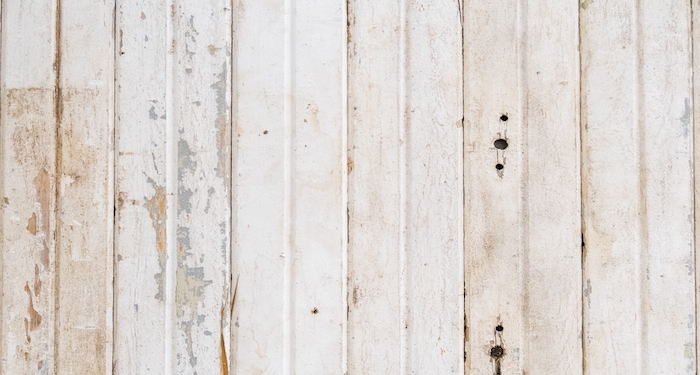
uPVC shiplap cladding boards are usually 150mm wide and come in five-metre lengths. The most common design is white boards, but they also come in a range of other colours and also in different effects such as render or woodgrain.
Installing this type of cladding is quite a straightforward and easy job as the boards fit together with a clip system. This makes this an easy option for those who want to complete the work as a DIY project.
The boards are lightweight and durable, and they require very little maintenance to keep them in good condition. You can use this type of cladding to cover large sections of external walls. They provide effective wet weather resistance and a degree of thermal enhancement.
The average cost of shiplap uPVC cladding per square metre is around £25-£45 per square metre.
Below is a list of the pros and cons of this type of cladding:
Pros
- Great for areas where the weather is harsh
- Aesthetically appealing
- Longer lips to provide better protection against rain and moisture
Cons
- It is only guaranteed for around 10-20 years
- Some cheaper versions may fade in the sunlight
- High-end versions can be as expensive as timber cladding
V-Joint Cladding Cost
V-joint cladding may also be referred to as tongue and groove cladding. This type of cladding is fitted together to provide a tight joint between each of the boards. The tongue on one side of one of the boards slots into the groove of another board to create a weather-resistant connection.
V-joint uPVC cladding usually comes in 100mm boards with five-metre lengths. These boards are easy to install as they are quite lightweight despite being robust, and they provide a good level of protection for the outside of the home.
This type of cladding is also available in a range of colours. It can also be created with a woodgrain or textured render effect to help mimic the appearance of more natural materials. These boards are quite simple to install and can be done as a DIY project.
The lightness of the boards makes them easy to handle, and the process of the installation is quite simple. This type of cladding is most suitable for smaller areas, such as a gable end installation or a design feature on a section of the property.
The average cost for V-joint cladding is around £30-£60 per square metre.
Below is a list of the pros and cons of this type of cladding:
Pros
- Protects against the elements
- Provides good insulation
- It gives a neat finish
- Strength of the joint between the boards
Cons
- Hard to remove and replace if a single piece is damaged
- Cheaper boards may allow gaps due to warping or shrinkage
- Best suited to cover small areas such as gable ends
How Much Does It Cost to Remove uPVC Cladding?
If you have recently moved into a property that has uPVC cladding, you may want to remove it completely, or you may want to remove it to replace it with new uPVC or timber cladding.
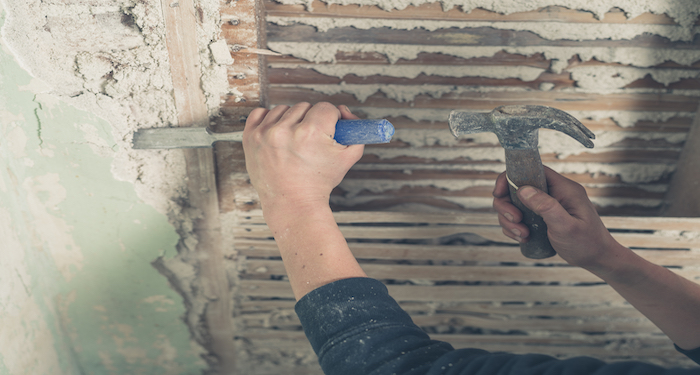
Cladding is one of the aspects of a property that people either like or dislike, so if you dislike cladding, you'll likely want to remove it if you have it on your home.
The cost you can expect for removing timber cladding is around £150-£250 per day. This work can be completed by one contractor. However, most of the time, contractors will work in pairs for safety and complete the job more efficiently.
You may also prefer to remove the cladding yourself as a DIY project to save on the costs of hiring someone to do it for you. The process of removing cladding is quite simple.
However, working at heights can be dangerous, and you should always have someone with you to help for safety reasons.
Depending on the amount of cladding that needs to be removed, it should take around 1-2 days to remove it.
This is providing that the job is straightforward and you or your contractors don’t run into any complications along the way.
FAQs
Q: Can you paint uPVC cladding?
A: uPVC cladding is not made to be painted. Painting isn't usually required as it is a low-maintenance material, so it's never necessary to paint it.
You can purchase cladding in various colours and styles to suit your needs. If you are determined to paint your cladding, it is possible.
However, you should be aware that it is difficult to get a good finish on it. The paint may peel or crack over time, and painting the cladding may void the warranty.
You will need to purchase special uPVC paint for the best results. The best option is to use a paint gun as brush strokes will be visible.
Q: How do you clean uPVC cladding?
A: You should only ever wash your uPVC cladding with a mild soap solution as any harsh chemicals may damage it. You can use a sponge to clean it by hand, or you can use a pressure washer.
If you are cleaning it by hand, make sure you have an extra person with you to steady your ladder. If you use a pressure washer, keep it on the lowest setting, so you don't damage or dislodge the cladding.
Q: How long does uPVC cladding last?
A: Good quality uPVC cladding boards should last for around 20 years or more. Most manufacturers will provide a guarantee of at least 15-20 years.
Q: Do I need planning permission for a uPVC cladding installation?
A: In the majority of cases, you won't need to obtain planning permission for installing uPVC cladding as it falls under the permitted development category.
However, if you live in a conservation area or a listed building, you will likely need planning permission for the work. In these cases, it's best to get in touch with your local authority for some advice before the work is carried out.
Q: Can uPVC cladding be fitted to any exterior surface?
A: uPVC cladding can be fitted to brickwork, timber, blocks, and render. For most external surfaces, timber battens will need to be installed on the wall initially, and the uPVC cladding will need to be attached to this framework.

